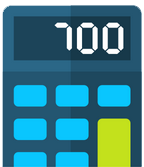What is the 2021/2022 personal allowance?
During the 2021 Budget announcement, Chancellor Sunak announced changes to the Personal Allowance and Basic Rate tax thresholds. These go beyond the usual, one tax year. So their effects will have a longer lasting impact.
Employers, pension providers, NICs payers and income taxpayers all feel the effects of these direct financial policy changes.
What do they mean for you?
What is the change to the Personal Allowance?
All UK taxpayers can earn up to a certain amount before they need to pay any tax. This is called the tax free Personal Allowance. The Personal Allowance rate is confirmed at each annual Budget and the trend has been for it to go up every tax year. The amount is the same in all four UK countries.
Chancellor Sunak announced that the Personal Allowance for the 2021-2022 tax year is £12,570. That’s applicable from 6th April 2021. You can earn up to £12,570 and not pay any income tax to HMRC.
The unusual element to this particular Budget is that he also committed this Personal Allowance figure to the next four tax years. This means that the Personal Allowance will be £12,570 until the end of the 2025-26 tax year.
How have tax rates changed?
From 2021-2022 tax year, the Basic Rate tax limit is £37,700.
Again, the addition of an extension to this for the next four tax years.
This Basic Rate of tax applies during the following tax years:
- 2021-22
- 2022-23
- 2023-24
- 2024-25
- 2025-26
The Higher Rate of Tax is fixed at £50,270 for the same time period.
From the 2026-26 tax year, the Personal Allowance and Basic Rate tax limit will be indexed to the Consumer Price Index (CPI).
These rates apply in England, Northern Ireland and Wales. The Scottish Parliament sets the rates for Scotland’s taxpayers.
What’s the impact of a static Personal Allowance Rate and basic rate tax limit?
Keeping these rates the same for four tax years is intended to: “,,,make sure the sustainability of the public finances and fund our vital public services in a fair and sustainable way.”
It’s maintaining Conservative Party election promises to not raise NICs, income tax or VAT rates. But it will bring more people into paying income tax, with each layer making an “average real loss”.
The government’s own predictions show the “average real losses” by 2025-26 are:
- Basic Rate taxpayers: £196
- Higher Rate taxpayers: £734
- Additional Rate taxpayers: £324
There are also government figures showing how many more taxpayers there will be by 2025-26 than if the rates were indexed with inflation.
- 3 million more people paying Basic Rate income tax
- 1 million more people paying Higher Rate tax
So the rates aren’t going up. But the status quo means that more people will move from within the Personal Allowance to paying the Basic Rate of income tax. And more people will be pushed from the Basic Rate into the Higher Rate tax band.
Income Tax Calculator
Estimate how much tax you should pay on your income...






